Photographs: Courtesy, Dr Reddy's. Bhupesh Bhandari in New Delhi
Some time in mid-March, Dr Reddy's Laboratories will reach a new landmark: Its sales in India will cross the Rs 1,000-crore mark.
The company was set up in February 1984 by Anji Reddy, a scientist in the state-owned Indian Drugs and Pharmaceuticals Ltd. It took the company no less than 25 years to report a domestic turnover of Rs 1,000 crore (Rs 10 billion)! Many companies have done it in lesser time.
But Dr Reddy's cannot be compared with others. For a good part of its 25 years, it was focused on the West. Governments there wanted to break the stranglehold of Big Pharma and bring down the cost of medication through inexpensive generic products.
This opened a whole new opportunity for Indian pharmaceutical companies. The absence of product patents had made them experts in reverse engineering. This, coupled with their low production costs, put them in a position from where they could command this market.
Dr Reddy's and Ranbaxy led the Indian charge. They acquired assets abroad, got into patent litigation with Big Pharma and also attempted to discover new molecules. But in the last few years, they ceased to be the movers and shakers of the industry.
...
Will Dr Reddy's strategy succeed in India?
Image: GV Prasad, vice chairman, Dr Reddy's.Photographs: Courtesy, Dr Reddy's.
All was going well, says Dr Reddy's vice chairman & chief executive GV Prasad, but the investors were not enthused. "Three years ago, we started asking the question why we were not the darling of investors. We found out that they want to see less volatility in business, they prefer a model that is predictable and profitable."
There indeed has been extreme volatility in the company. It had acquired Betapharm of Germany for 480 million Euro in 2006. It was the fifth-largest generic company there with a market share of 3.5 per cent. But overnight the rules of the business changed. To make medicine cheaper, the country moved to a tender-based system, where the lowest bidder got the order.
This brought prices crashing down. Dr Reddy's found that in the new scenario the pieces at which it bought medicine from local producers no longer made sense. It has therefore migrated a third of the production to India. But the fight is far from over. It had to make provision of Rs 860 crore in October to December 2009-10 for erosion in its value!
...
Will Dr Reddy's strategy succeed in India?
Image: Finished Dosages Facility,Shreveport, Louisiana, US.Photographs: Courtesy, Dr Reddy's.
Or look at the United States, which is almost 50 per cent of global pharmaceutical sales. It is still Dr Reddy's largest market and accounts for almost a third of its annual revenue. Sales in the October-December quarter fell over 55 per cent.
This was because in the same quarter of the previous year, the company had in the market a drug called Sumatriptan with six-month exclusivity. It had caused a spike in its turnover during those six months. But the benefits ran out after that.
Analysts say Dr Reddy's could launch another 13 such products in the US in the years to come. Also in 2009, Dr Reddy's had to recall four products from the US because some lots were found to have oversized products. It also lost one large customer there.
The company also suffered reverses in its new drug discovery programme. Molecules it had licensed to Novo Nordisk for development were discontinued. (The clinical trials for its latest anti-diabetes drug, Balaglitazone, named after Balaji of Tirupati, are being carried out by Rheoscience of Denmark.)
The Indian pharmaceutical industry is abuzz with the talk that it is under attack from Big Pharma, and the adversity it faced in developed markets result from that. Almost all large pharmaceutical multinationals now have their own generic arms.
Some even hand out the generic rights to friendly companies. The jury is still out on the motives. Meanwhile, Dr Reddy's has redone its business model to make it predictable and less volatile.
...
Will Dr Reddy's strategy succeed in India?
Image: Betapharm, Germany.Photographs: Courtesy, Dr Reddy's.
Instead of going all over the place, Dr Reddy's has decided to focus on five markets: the US, India, Germany, Russia and the United Kingdom. Prasad says the target is to be amongst the top five in each of these markets.
For smaller markets, it has tied up with GlaxoSmithKline which has a distribution network in place. (This perhaps could be the reason why there have been rumours of GSK buying into Dr Reddy's - a charge Prasad denies.) Drug discovery research (now called proprietary products) has been brought together with research on existing molecules and bio-similars, so that all eggs are not in one basket.
"This will drive growth after five years," says Prasad. By far the biggest drive of the company is in India - a stable and high-growth market.
...
Will Dr Reddy's strategy succeed in India?
Image: Finished Dosage Facility, Hyderabad.Photographs: Courtesy, Dr Reddy's.
The Indian market, to be sure, is not easy. It is complex and tough. There are over 20,000 registered pharmaceutical companies in the country; each molecule has at least 50 brands in the market. As a result, the market is extremely fragmented. The market leader, Cipla, has a share of just 5.4 per cent. Dr Reddy's is 12th with a 2.2 per cent share of the pie.
"Our problem was," says Dr Reddy's senior vice president and head of marketing for India, Ritha Chandrachud, "that most of our products were in special therapies like oncology and dermatology, while our real strength was in mass market products prescribed by general practitioners and consultant physicians."
Dr Reddy's supplies active pharmaceutical ingredients across therapies to the world's top companies, and also sells a variety of generics in several markets. So, it was small work to develop a robust pipeline of products for India. So far in the current financial year, Dr Reddy's has launched 65 brands - ten of these have been in-licensed from abroad.
Is it enough? "There is still a lot of headroom for us to grow," says Chandrachud. While market leader Cipla covers 75 per cent of the molecules (drugs and medicine) sold in India and newcomer Mankind Pharma covers 60 per cent, Dr Reddy's count is only 40 per cent.
...
Will Dr Reddy's strategy succeed in India?
Image: Quality Control Lab, Hyderabad.Photographs: Courtesy, Dr Reddy's.
Chandrachud hopes to raise it to 50 per cent in a year's time. She also wants to bring about a qualitative change in her product profile.
While 70 per cent of the market is acute disorders which require shorter medication, 30 per cent is chronic disorders where drugs are prescribed for a longer period. Smart companies therefore try to sell more in the chronic disorders market.
Sun Pharma, for instance, sells 70 per cent in that space. That perhaps is the reason why it is India's most valuable pharmaceutical company. Chandrachud plans to alter the ratio for Dr Reddy's from 70:30 in favour of acute disorders to 50:50.
Apart from products, the other leg of the pharmaceutical business in India is the access to doctors who write the prescriptions. Here, medical representatives play a crucial role. The larger your field force, larger your turnover.
...
Will Dr Reddy's strategy succeed in India?
Image: Research Lab.Photographs: Courtesy, Dr Reddy's.
Dr Reddy's has ramped up its field force to 2,500; though it is larger than Ranbaxy (2,000), it is way short of rivals like Mankind Pharma (5,000). But, says Chandrachud, her productivity per medical representative at Rs 400,000 per month is better than the industry average of 300,000.
There are about 6000,000 doctors in the urban markets; her men and women are in touch with about a third of them. In other words, there is still a long way to go. Dr Reddy's can thus be expected to expand its field force further in the days to come. What helps, Chandrachud says, is the strong brand equity with doctors. "We got IMS to do a survey; and we found that our biggest strength is our brand equity."
Country roads
Dr Reddy's knows that the urban market is tough to crack - that's where all companies have focused so far. So, it has readied an aggressive push into rural markets. About a quarter of annual pharmaceutical sales worth Rs 35,000 crore (Rs 350 billion) in the country happens in villages. But the market is scattered thin.
There are not more than 200,000 rural doctors, and not more than a fifth of them hold an MBBS degree. But Dr Reddy's sees an opportunity here. "This market is highly under-penetrated. The incomes are going up. The government is spending a lot of money in the National Rural Health Mission," says Reddy.
...
Will Dr Reddy's strategy succeed in India?
Image: Technology Development Center, Hyderabad.Photographs: Courtesy, Dr Reddy's.
It has put together a new brand portfolio for such markets (Redikate, Redihealth and Redihope, to name a few) based on the insight that rural prescriptions are often different from urban prescriptions.
It has engaged 600 medical representatives from two external agencies (Ma Foi is learnt to be one) especially for the rural markets. The challenge here is to reach the customers.
To address that problem, Dr Reddy's is trying three models:
- The first plan is to use local entrepreneurs who can diagnose ailments like hypertension and refer patients to doctors. They could be paid for every referral. The model, like Hindustan Unilever's Shakti, is self-sustaining and scalable.
- The second plan is to link people through health camps. In fact, Dr Reddy's has held anaemia camps in the last three months for 50,000 villagers, of which 40 per cent were found anaemic.
- The third plan is to use the infrastructure of agencies and programmes which are already there in villages, like the World Health Foundation and ITC's e-choupal.
The models will be rolled out in Andhra Pradesh, Uttar Pradesh and Maharashtra, which together account for around a quarter of the rural market.
The rural market is still small for Dr Reddy's -- this year it will contribute around Rs 75 crore (Rs 750 million) to revenue. But the number could rise in the future. It will be a homecoming of sorts for the prodigal. The problem is, every pharmaeutical company, Indian as well as multinational, is ready to join the rural bandwagon.

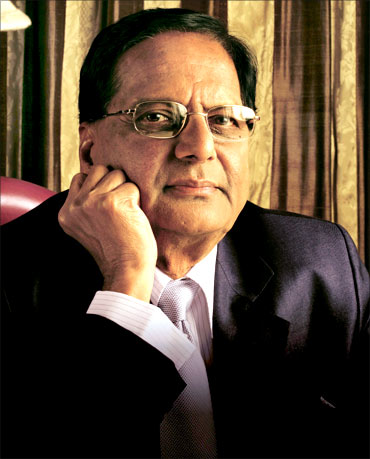

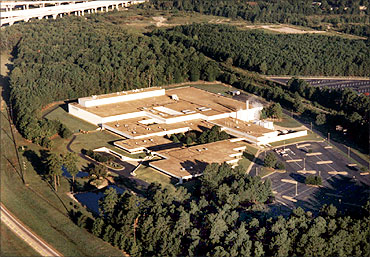
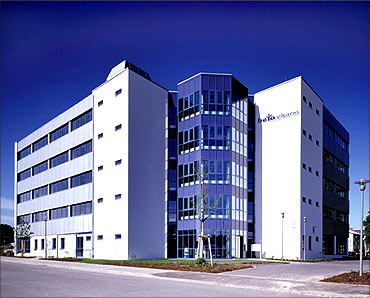
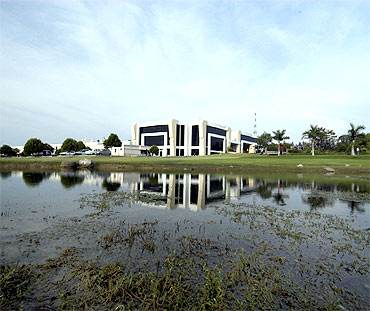
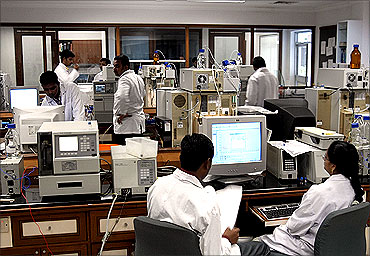
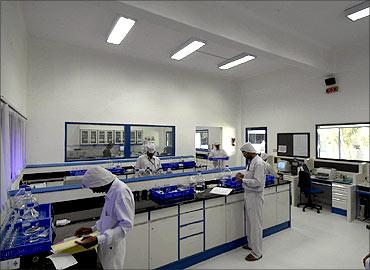
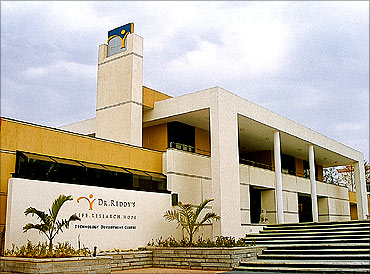

article